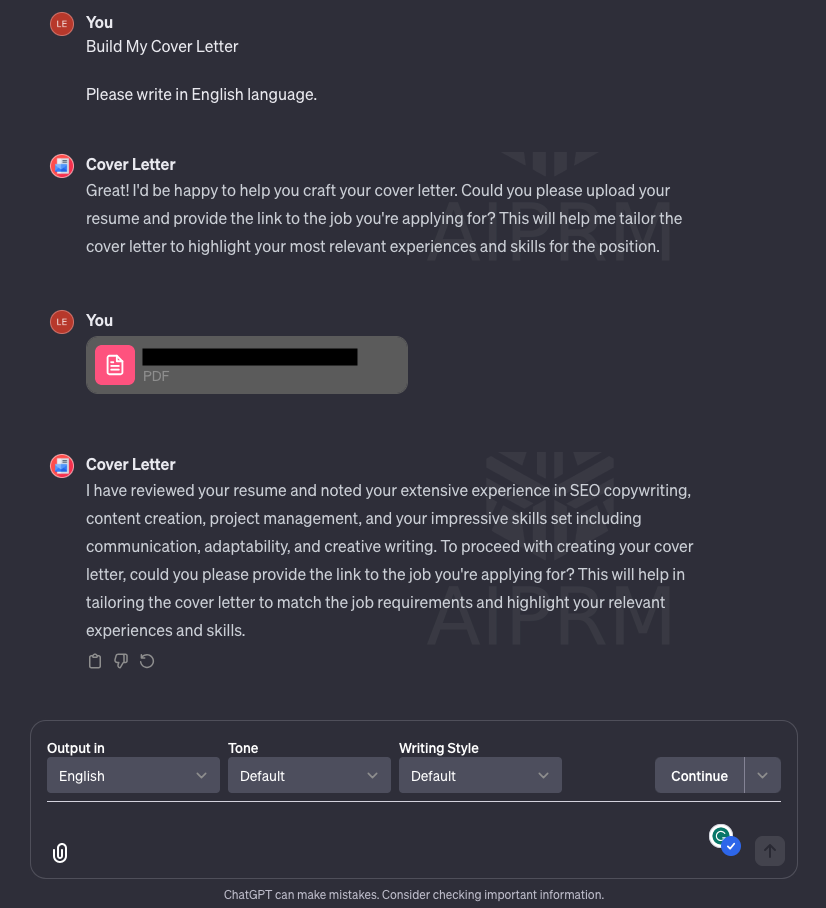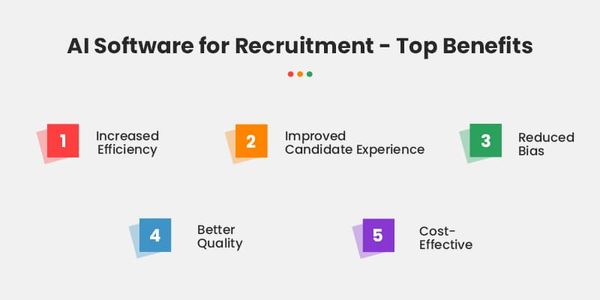The Future of Work: AI’s Impact on Salaries, Hiring, and Job Security
We’ve all heard this phrase: Artificial Intelligence (AI) will take over your job sooner or later.
While it sounds scary, it’s not entirely a hoax. In 2023, research by Goldman Sachs examined the potential effect of AI on economic growth, highlighting how intensive automation will result in a ‘rapid acceleration in task automation,’ which will drive lower labor costs and increase productivity.
While this sounds like a feast for business owners, workers and employees globally are distressed about their replaceability with AI.
So, how exactly is AI impacting our work now, and how will it affect future business industries regarding salaries, hiring, and workers’ job security?
AI’s Role in Hiring and Recruitment
Many HR managers and employees find sorting through mountains of data, talent pools, and candidate information tedious.
From collecting data to sorting through applications to employees’ contract management, the manual processes of hiring and recruitment, especially the repetitive tasks, damage the quality of your candidates and the efficiency of your HR personnel.
Here are some ways AI candidate sourcing tools are becoming an integral part of many HR organizations:
Automated Resume Screening
An automated resume screening is software used to sort or screen applicants' resumes automatically based on qualifications set by the HR team in the system.
As automated resume screening utilizes AI in recruitment, it can only feed or ‘filter’ data through predetermined parameters that HR deems fit for a specific role they’re looking for. The system then forwards the filtered candidates that meet these parameters to the HR managers for a more detailed examination.
With automated resume screening, HR managers can eliminate much of what makes the hiring process tedious, allowing them to leverage AI to streamline hiring processes and devote their time to more valuable recruitment tasks. AI uses predictive analytics to identify high-potential candidates and match them to roles.
However, the biggest challenge with using AI in recruitment is that unfit candidates can ‘game the system’ by inputting keywords that will allow them to pass the automated screening process.
Bias in AI Hiring
HR personnel and managers will inevitably become biased in the recruitment process. Management should implement AI in HR systems to help eliminate this bias, which is highly present in manual processes.
To eliminate bias in AI hiring, HR managers should set clear criteria for the system based on skills, qualifications, and experience rather than vague and subjective parameters irrelevant to the role, like personal preferences.
Managers can also adopt tools or software in AI recruitment that automatically anonymize submitted candidate profiles to eliminate demographic bias.
However, it is essential to remember that AI in HR doesn’t entirely eliminate bias and can even perpetuate it. After all, AI still operates based on human intervention, and bias will exist through the system's creators and the data it is fed.
AI hiring bias can exist through:
- Algorithmic bias: When a system automatically rejects or favors applications because of a particular pattern or algorithm.
- Representation bias: When the system does not have enough data, it starts to underrepresent specific groups or demographics.
- Predictive bias: When a system identifies that applicants from a certain group get hired more often, it automatically passes everyone from that group through the screening process.
AI-Powered Interviews
In AI-powered interviews, interviewers use software to have candidates answer preliminary questions using preset text or video. The AI software then submits data, such as transcripts of answers and analyses of tone, speech, facial expressions, and body language, to provide HR teams with relevant insights for decision-making.
HR teams can also fully leverage AI in recruitment by leaving pre-screening interviews entirely to AI-powered interview software and automating scoring and ranking based on generated analysis, such as communication and technical skills so that managers can focus on top-ranking candidates.
Skills Over Degrees
AI technologies drive the shift of what many employers deem necessary in today’s working landscape. Adaptability and practical application are now more crucial than an educational degree, especially in industries where employers need personnel who can quickly add value and efficiency to the organization.
AI in HR can now quickly identify and filter candidates who match a business’s skills requirements, pushing greater priority or emphasis on skills and experience rather than educational attainment when necessary.
AI’s Influence on Salaries and Compensation
Automation and Wage Polarization
The increasing demand for artificial intelligence skills has fueled the AI-driven skills gap and wage inequality, particularly wage polarization, in many industries adopting automated AI processes.
Artificial intelligence skills have recently caused wage polarization. Wages for high-skilled and low-skilled workers are growing faster, leaving middle-skilled workers' wages stagnant.
AI’s Effect on Low-Skilled vs. High-Skilled Jobs
With technological advancements, the wages of high-skilled workers like those in the IT or tech industries continuously increase, as do those of low-skilled workers like carpenters, construction workers, roofers, or pipe fitters, whose jobs cannot be easily replaced by AI.
Meanwhile, wages of middle-skilled workers, such as bookkeepers, clerical workers, and office administration workers, who typically perform routine work, remain stagnant or decrease due to their replaceability with AI software.
The Demand for AI-Related Skills
Today, AI drives the productivity and efficiency of many industries, so it is no surprise that the demand for artificial intelligence skills and entry-level AI jobs is also increasing.
According to a survey by Access Partnership for Amazon Web Services, 90% of respondents expect to use AI solutions in their business by 2028. They also estimate that employees who acquire AI expertise could see pay raises of up to 35%.
Additionally, 42% of respondents are actively looking for candidates with AI development qualifications, as they rank AI as the ‘most important skill set’ a candidate can possess.
Here are the top artificial intelligence skills that will help find a career in AI today:
- Programming languages
- Data modelling and analytics
- Machine learning
- Natural language processing
- Problem solving and critical thinking
AI and Job Security: What Roles Are at Risk?
Job displacement isn’t new. In fact, since the 1900s, many workers have been displaced because of the invention of machinery and equipment that can more productively and quickly perform repetitive and laborious tasks, like harvesting machines instead of manual harvesting or the spinning jenny instead of weavers.
Today, AI is considered the ‘spinning jenny’ of this generation, mainly because of the comparison that AI is slowly taking over many of the manual, laborious, and repetitive tasks of many industries.
Some of the careers most affected by AI include:
- Customer service with automated AI chatbots
- Retail cashiers with automated checkout systems
- Graphic designers and artists with generative AI
- Content writers and proofreaders with ChatGPT
- Factory or warehouse jobs with AI-powered machines
According to The Future of Jobs Report 2025 by the World Economic Forum, 40% of employers plan to reduce their workforce where AI can automate tasks, and 60% identify ‘broadening digital access’ as the most transformative trend by 2030.
The Rise of Human-AI Collaboration
Human intervention and skills remain irreplaceable for many industries and jobs, with AI making jobs more efficient and productive. This collaborative system is becoming the most effective and responsible use of AI—a supplement to human tasks, not a replacement, whether through big data analysis or optimizing production processes.
An example of human-AI collaboration is organizations leveraging AI-powered chatbots to answer basic customer queries with readily available information. However, when a query demands a more nuanced and complex concern, human customer agents should be ready to offer a more personal resolution.
Reskilling and Upskilling
AI is the new future of work, and managers and employees need to explore reskilling and upskilling programs in an AI-driven market that will give them training and exposure to embrace new technologies and further their careers.
Reskilling and upskilling involve significant occupational change. Employees will experience financial distress during these processes, especially with expensive education and training. Turning to debt relief programs can help ease the burden during this transition.
New Job Opportunities Created by AI
While it is true that AI is on the road to displacing some jobs, it creates them too. According to Forbes, here are examples of new technical job opportunities created by AI:
- AI trainers and operators
- AI ethicist
- AI applications developer
- AI prediction analyzer
- AI input and output manager
In addition to technical jobs, AI, particularly generative AI, can open up new opportunities for small business owners. Over the years, the custom t-shirt industry has exploded with the rise of generative AI, allowing anyone with creative ideas to create t-shirt designs and mock-ups easily through AI-powered design software.
Conclusion: Will AI replace all jobs in the future?
The quick answer is no, not for all jobs in the near future.
While AI has improved dramatically over the years, its impact on hiring and recruitment, salaries, and job security still cannot do many things. AI cannot easily replace intelligence, moral judgment, common sense, and the overall worldview unique to human beings.
Ultimately, AI is an undeniably beneficial technological development. With practical and moral use, it should support and sustain businesses, allowing them to become more productive and efficient without entirely sacrificing the value of the unique human touch in business operations.



